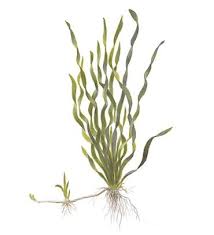| Back to Back Issues Page |
 |
|
The Goldfish Gazette, Issue #079 Goldfish Proof Plants July 31, 2020 |
Goldfish Care TipsA Free Monthly Resource For Goldfish Enthusiasts In This Issue Because Goldfish are omnivorous, any green matter in their environment such as aquatic plants are considered a source of food. Goldfish Proof Plants
The answer is yes, if you choose the right ones. Advantages of PlantsMany aquarists don’t bother with the hassle of live plants, but they do have their advantages.1. The best-looking displays usually have living plants because it more closely replicates nature. 2. Plants absorb nitrates, the last stage of the nitrogen cycle. Few aquariums will have enough plants in them to absorb all nitrates produced by the fish, but they will reduce the frequency of water changes. 3. Some edible plants can be added to the aquarium as a source of natural food. Disadvantages of Plants1. The biggest concern with plants is the introduction of diseases. Plants purchased from your local fish shop are often displayed in aquariums full of fish. Outbreaks of pathogens such as White Spot, Velvet and Costia are common after new plants are introduced without sterilization. Plants gathered from natural sources can harbor lice or anchor worm eggs or juveniles.2. Plants need regular upkeep. Dead leaves need to be trimmed, excessive growth removed and plants replaced as they start to look seedy. Plants do much better in ponds because of the natural light, but algae can also flourish and smother plants. 3. Plant roots will clog under-gravel filters, and seasonal die-off can clog pond filters. Pond and Bare Bottom Aquarium PlantingMany Goldfish keepers, including myself, don’t have gravel or sand in the bottom of their aquariums to make cleaning and water changes easier. Having no substrate for plants to take root in doesn’t mean you can’t have plants. The easiest solution, and this also applies to ponds, is to plant in containers.Suitable PlantsListed below are plants I used when hiring aquariums that proved to be the most successful in resisting Goldfish attack.Aquariums VallisneriaAs a background plant, useful for hiding filter tubing and other aquarium hardware Vallisneria is a firm favorite. There are several varieties:• Corkscrew Vallisneria. The leaves of these varieties grow in the form of a corkscrew, and grow 12-20 inches (30-50cm) in length. Some newer dwarf varieties only grow 6" (15cm) tall. • Giant Vallisneria. The leaves can grow 6 foot long (180cm), so this variety is more suited to deep ponds. • V.Americana or V.Spiralis with flat ribbon like leaves hence the name tape grass. The most commonly used form with the leaves reaching between 3-4 foot long (90-120cm). Blue HygrophilaThis plant is mainly used as a foreground plant. It is a bog plant which can adapt to complete immersion in water. It is sold as a cutting and is a fast growing plant in conditions of good light and an algae-free environment. Under ideal conditions, it can grow to the top of the aquarium.The leaves are often chewed by goldfish during spring and autumn or if they are very hungry. It tolerates a wide pH and temperature range. Hygrophila DifformisUsed for creating interest. Fast growth helps prevent algae because the plant absorbs a large amount of nutrients from the water. A shortage of micro-nutrients leads to pale leaves, which may be an indication that the aquarium needs fertilizer. It has a pH tolerance of 5-9.Red BacopaAgain, used for creating interest. The plant comes from Southern USA and Central America. Cultivation is done by rooting stem cuttings. It requires good light and an algae-free environment.Goldfish will generally not chew on this plant. The leaves, completely green initially, get quite a red tinge to the underside. Its tolerance levels for pH and temperature are well within the levels experienced in the aquarium. Ponds Lilies are an obvious choice here, but they do die back in autumn, so watch for a build-up of dead plant material before winter and check filter flows. Water Hyacinth, a free-floating perennial aquatic plant is another good choice for ponds but requires full sunlight to prosper. Again, die back in autumn can cause problems because of the massive root systems they develop. An ideal plant for Goldfish to spawn on. To see images and more Goldfish resistant plants, click here...
Comments? Ideas? Feedback? I'd love to hear from you. Just reply to this e-zine and tell me what you think, or what topics you want covered. Next Month's Topic Air Pumpswww.facebook.com/aboutgoldfish |
| Back to Back Issues Page |
